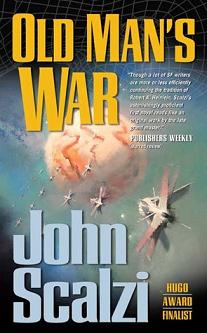With Podkaybe of Mars, does not end well:
Unlike Elsie, Jackie, or Peewee, poor Podkayne is cut off at the knees before her adventure begins. Podkayne can dream of commanding a space ship but she can never see that dream realized because her narrative purpose is to serve as a doleful lesson to readers. This is where misplaced female ambition can lead! Well, if not Podkayne’s misplaced ambition, then her mother’s. Where the classic Heinlein juveniles are about boys reaching for the stars, Podkayne of Mars is a hectoring lecture, telling women to stay in their place.
To be fair, it’s not just Podkayne of Mars James has problems with, as shown by the list of the other reviews, below. It’s abundantly clear that many of the problematic opinions Heinlein had in his later books towards the proper role of women, sex, incest and consent were not a product of his medical troubles nor a new development, but present already in his juveniles. For somebody lauded for being so forward looking, he sure is wedded to gender models already becoming obsolete at time of writing. With rare exceptions, women are there to be mothers or wives and while his heroes may often be overshadowed by their female companions, they still need to be satisfied with these roles once the story is over.
- Rocket Ship Galileo (1947):
“Depraved indifference” and “the uncle who used his relatives as living meat shields” are going to be book-ends for this series of reviews.
- Space Cadet (1948):
It’s entirely possible that Matt is part of a terrible machine and too naïve to realize but at least, unlike my memory of Starship Troopers, the Patrol has ambitions of being lawful good.
- Red Planet (1949):
By this point in his career, Heinlein was still sticking with the “girls are ick and moms are a drag” model; there’s a genially patronizing treatment of the female inability to handle math in a discussion of the air plants that made me idly wonder what that character’s throat would sound like if his wife stuck a knife in it in mid-sneer.
- Farmer in the Sky (1950):
It’s pretty clear to me that George’s Plan A was to ditch Bill on Earth so George could secretly marry Molly and emigrate to Ganymede; given the difficulty of communicating with Earth, it’s possible Bill might not have found out about George’s new family for years, if ever.
- Between Planets (1951):
I’ve never particularly noticed it before but there are parallels between the plot of this and the plot of Lord of Rings; Don is stuck with a ring of great importance and what he needs to do to save the day is get rid of it under the right circumstances.
- The Rolling Stones (1952):
Heinlein paid lip service to the idea that women could be professionals but all that had to stop as soon as he married one of them, even if it meant poverty for the Heinlein family.
- Starman Jones (1953):
This book stands out as possibly the first young adult novel I ever encountered that featured pretty transparent references to johns being rolled by prostitutes.
- The Star Beast: (1954)
Of all the Heinlein Girls in Charge, The Star Beast’s Betty Sorenson is the girl most in charge and in Mr. Kiku we find an extremely uncommon figure for SF, a sympathetic career bureaucrat.
- Tunnel in the Sky (1955):
Since the majority of Americans didn’t come to see mixed race marriages as acceptable until the mid-1990s, forty years after this book was written, that minor bit of business was pretty daring on Heinlein’s part.
- Time for the Stars (1956):
Given that telepathy completely breaks relativity, I don’t know that it makes any sense to discuss whether the way he telepathic communication is affected by relativistic star-flight is realistic.
- Citizen of the Galaxy (1957):
Purchased on an apparent whim by the beggar Baslim the Cripple, Thorby is rescued from a life of exploitation and abuse for one as the acolyte and adopted son of a man who is far more than he appears.
- Have Spacesuit, Will Travel (1958):
For me, the highlight of the book is young Peewee Reisfeld, twelve years old — almost — and willing to take on an alien invasion single-handed if she has to. Peewee might be the finest example of Heinlein’s girls in charge. Peewee is smarter than Kip, she is just as brave, she manages to escape (temporarily) from the wormfaces before she ever meets Kip, something she keeps up through the book, and she saves Kip on a number of occasions.
- Starship Troopers (1959):
The book opens as Juan Rico nerves himself to murder alien civilians, “Skinnies”, as he calls them. Heavily armed and armoured, Rico and his human confederates rampage through the Skinny city, destroying infrastructure and leaving a trail of bodies behind him (including what may be a substantial fraction of the congregation of a church).
Does this mean these books aren’t worth reading? Not entirely; certainly the best of the bunch like Citizen of the Galaxy have charms that make their flaws easier to overlook, but the overwhelming sexism does sour a lot of the fun in these.
If you like these reviews, you can commission your own review from James.
